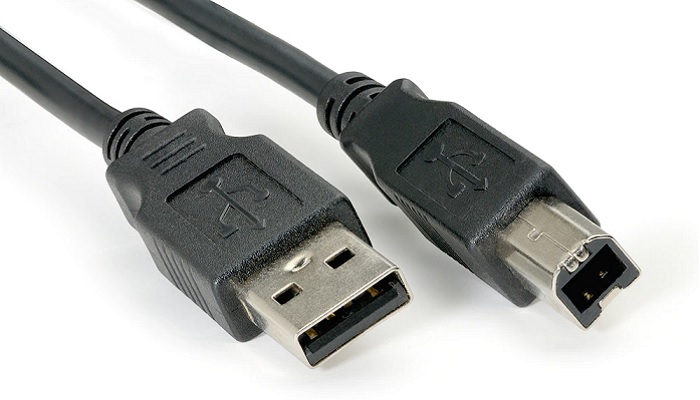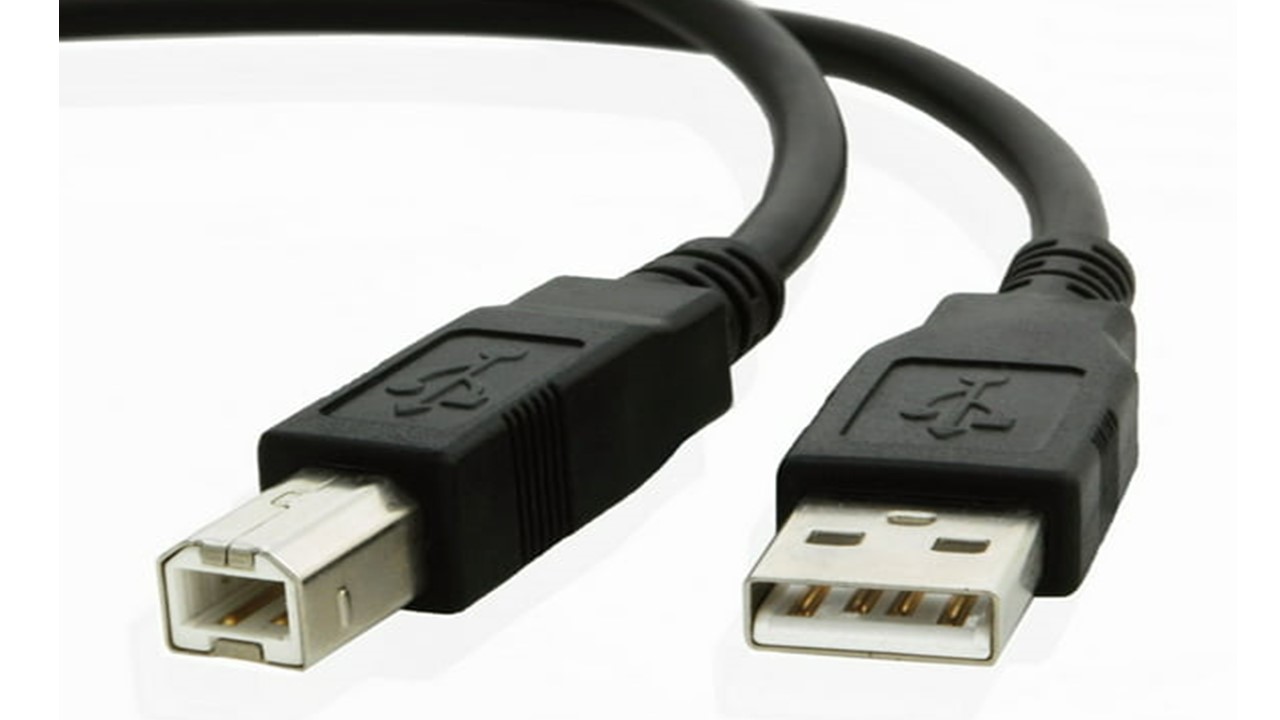In This Article
What is USB Type B?
USB Type B ports, also referred to as USB standard B connectors officially, signify the B style Universal Serial Bus connectors. Technically, it refers to the upstream square-shaped port on the hub.
KEY TAKEAWAYS
- The USB Type B ports are square in shape and may also have the upper ends of the outer corners chamfered depending on its version designed specifically to connect larger peripheral devices.
- These Type B ports support all versions of USB which includes USB 1.1, USB 2.0 and USB 3.0. The Powered-B variant of the USB B 3.0 version also supplies power.
- These connectors come in different colors depending on their versions such as the USB Type B 1.1 and 2.0 versions are black in color and USB Type B 3.0 is blue. The cables however can be of any color.
Understanding USB Type B

The Universal Serial Bus Type B ports are the square connectors that have a slightly larger square or rounded protrusion at the upper ends to support attaching printers and external hard drives.
However, it may not be in every version of these ports. It all depends on the particular version.
These ports are typically designed to connect larger USB peripherals devices to the computer or a host device but over time, the designs have changed and now several smaller devices can be easily connected through these specific types of ports as well.
These connectors that act as an upstream port on the hubs support every USB version apart from USB 4.
This means that a USB Type B port is available in USB 1.1, 2.0, and 3.0 versions but the Powered-B type connector is however available only as USB 3.0.
These ports may come in different colors for easy identification such as:
- The USB 3.0 Type B connectors are usually blue in color
- The USB 2.0 and USB 1.1 Type B ports are black in color.
However, you should keep in mind that this is not universal because the manufacturers may use any color for these specific types of ports and cables.
The male connector of it is called the plug and is usually found on one end of the USB B and even in USB A cable. The female USB B connector is called the port or receptacle.
The reason for creating these Type B style ports is primarily to allow connecting peripheral devices but eliminating the risk of connecting two host computers with each other.
Technically, most of these B type ports utilize the USB 3.0 technology which means that the rate of data transfer of these connectors is typically up to 5 GB/s.
Over time, in the USB 2.0 the miniaturized versions of USB Type B ports appeared and the two variants of it are mini and micro.
These special types of USB B ports allowed connecting even smaller devices such as tablets and mobile phones.
Typically, this specific type of USB ports and connectors come in different designs but the most prominent ones of all are:
- The original Standard B
- Standard B 3.0
- Mini B
- Micro B and
- Micro B 3.0.
There are usually two separate configurations available in the USB Type B ports, of which one supports the speed protocols of USB 1.1 and 2.0 while the other supports the specs of USB 3.0 and later versions.
In order to ensure compatibility of the Type B USB connectors, it is designed just like the USB 2.0 and USB 1.1 which means that its plug will fit into any Type B receptacle from its own as well as from other USB versions.
However, the USB 3.0 Type B ports will not fit into those receptacles because the shape of these ports is different from that of the others.
However, its form factor is designed in such a way that its receptacles support plugging in previous USB Type B versions from 1.1 and 2.0.
This means that the USB Type B plugs from 1.1 and 2.0 versions are compatible with USB 3.0 Type B receptacles physically but the plugs of the latter are not compatible with the receptacles of the former versions.
This is because the connectors of the USB 3.0 Type B come with nine pins instead of four found in the earlier versions of USB Type B ports to allow faster data transfer.
So, the shape of the ports had to be changed a little bit for the additional pins to go somewhere.
The other type of the USB 3.0 Type B ports, the Powered-B ports, usually follow the same physical and design compatibility rules as the other but come with two more pins, adding up to eleven.
The plugs of these specific ports are usually located at one end of the USB A/B cable to be plugged into the Type B receptacle on the device and the other end is plugged into the port of the host device such as the computer.
Uses

The USB Type B ports were typically designed to be used to connect larger computer devices such as printers, scanners, floppy drives, optical drives, and hard drive enclosures.
Any and every USB Type B port cannot be used with any and every device. It varies according to the version, type and design of both such as:
- A USB 3.0 B Type connector will allow using USB peripherals such as a printer and other larger peripheral devices
- A USB Mini B socket can be used to connect peripheral devices in a smaller form factor such as mobile devices, a few specific types of digital cameras, MP3 players and
- A USB Micro B port can be used to connect slimmer smartphones and mobile devices, digital cameras, or other peripherals such as a few specific types of hard drives, 3D imaging and Machine Vision devices as well.
However, you cannot use a USB B directly for audio but you can use your headphones or play external speakers indirectly by connecting a USB A or USB B printer cable to the external Digital Audio Converter.
The other end should be connected to a 3.5 mm audio out cable to the receiver.
You also cannot use a USB port for providing power unless it is a USB 3.0 Powered-B port.
Conclusion
The USB Type B ports are quite useful that allow connecting different devices to the computer or other host devices.
However, these specific styles of ports are used less today since these are being phased out slowly and are being replaced with more advanced and refined types of USB connectors.